The Sabre was also notable for its numerous variations, which is a testament to its adaptable design.
With nearly 10,000 built, the F-86 remains among the most prolific Western jet fighters of all time.
Fortunately, Germany was on its last legs.
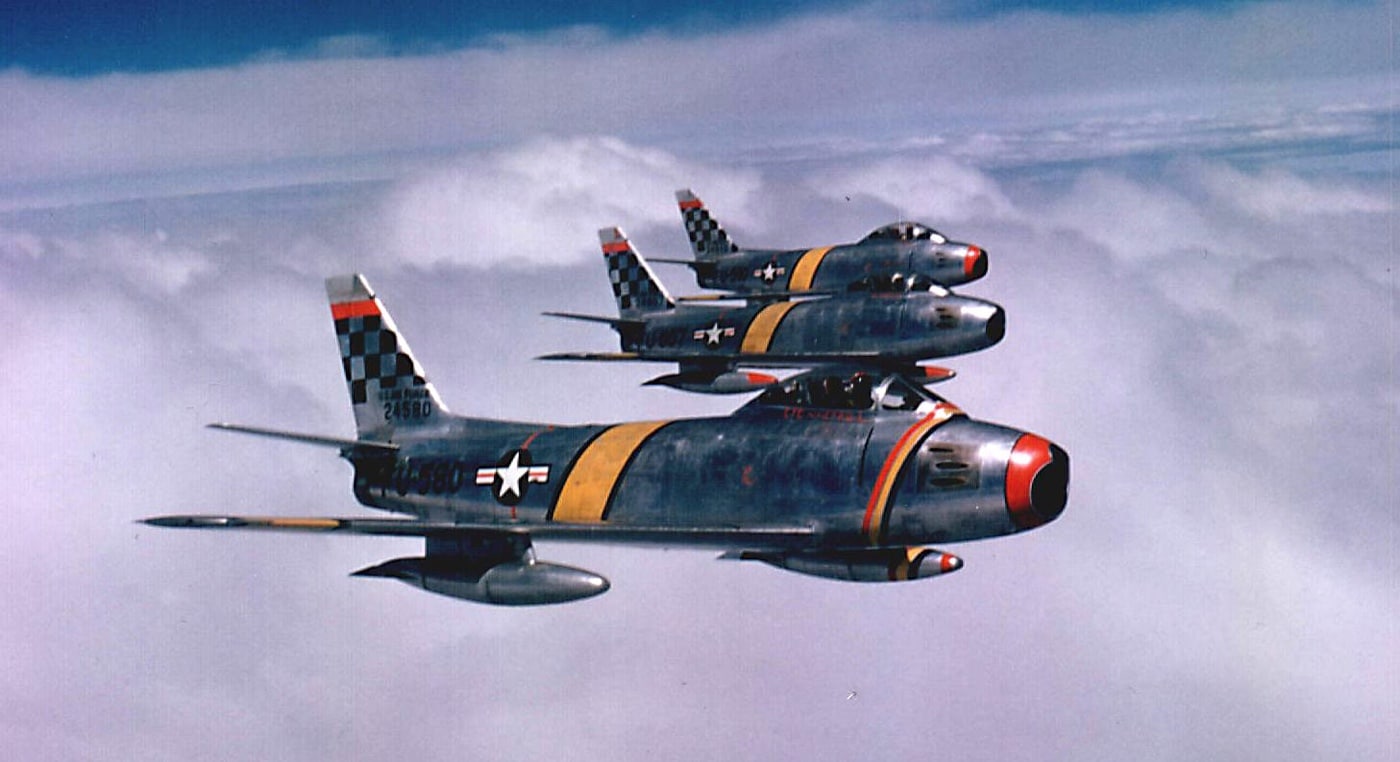
Col. Benjamin O. Davis, Jr. leads three F-86F Sabre fighters during the Korean War. Col. Davis, a Tuskegee Airman, was one of the first African-American wing commanders. Image: U.S. Air Force
For American aircraft designers, it was akin to being provided with an afterburner.
Germany and, soon after, Japan were defeated.
The significance of that fact cant be overstated!
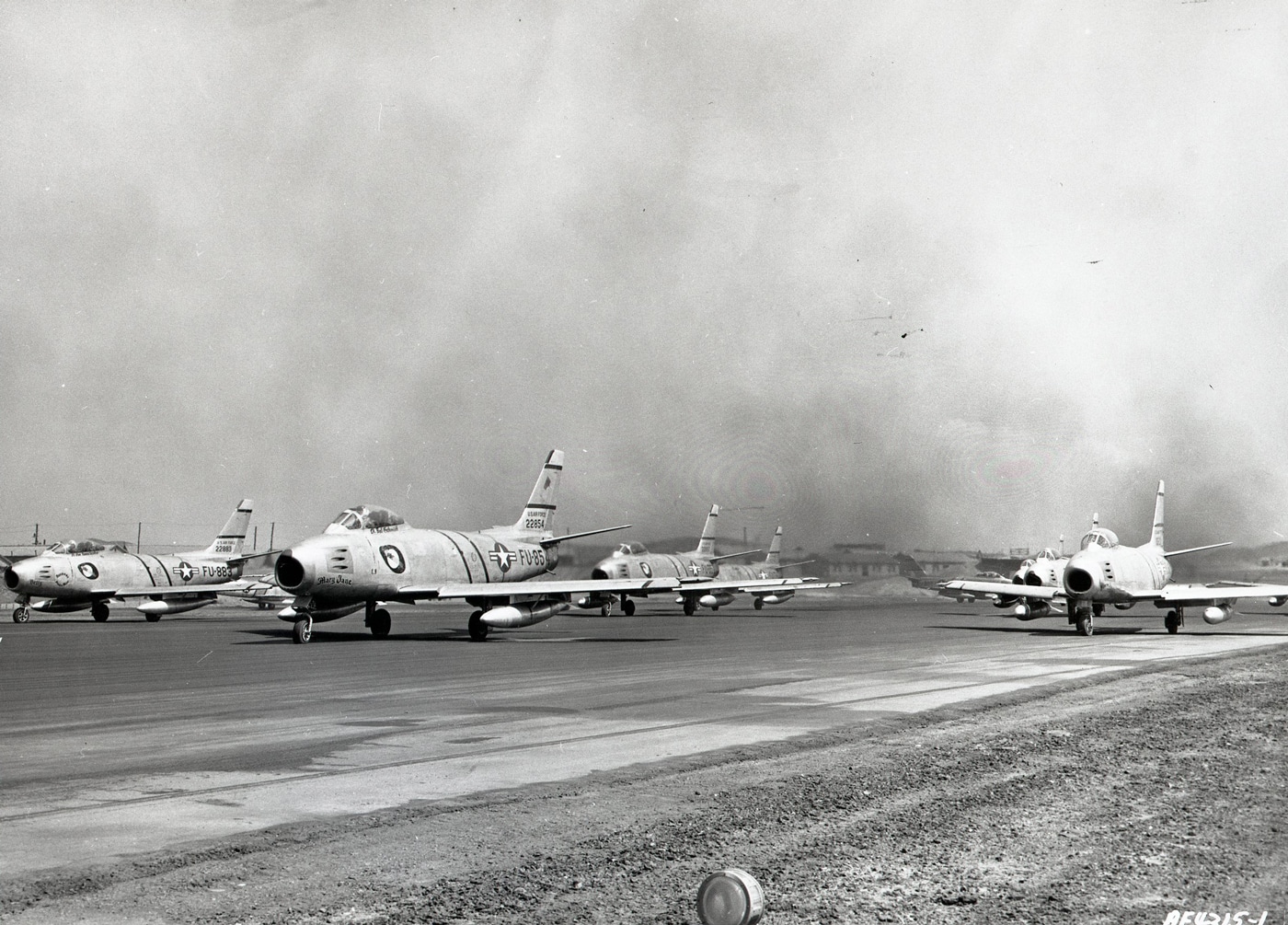
In April 1953, U.S. Air Force F-86 Sabre jets of the 4th Fighter-Interceptor Wing run up their engines just before take-off during the Korean War. Image: NARA
The initial production P-86A model was powered by a 21.57kN (4,850 pound) J47-GE-1.
It first took to the skies in May 1948.
Brown, flying an F-80C, shot down a much faster MiG-15 over North Korea.
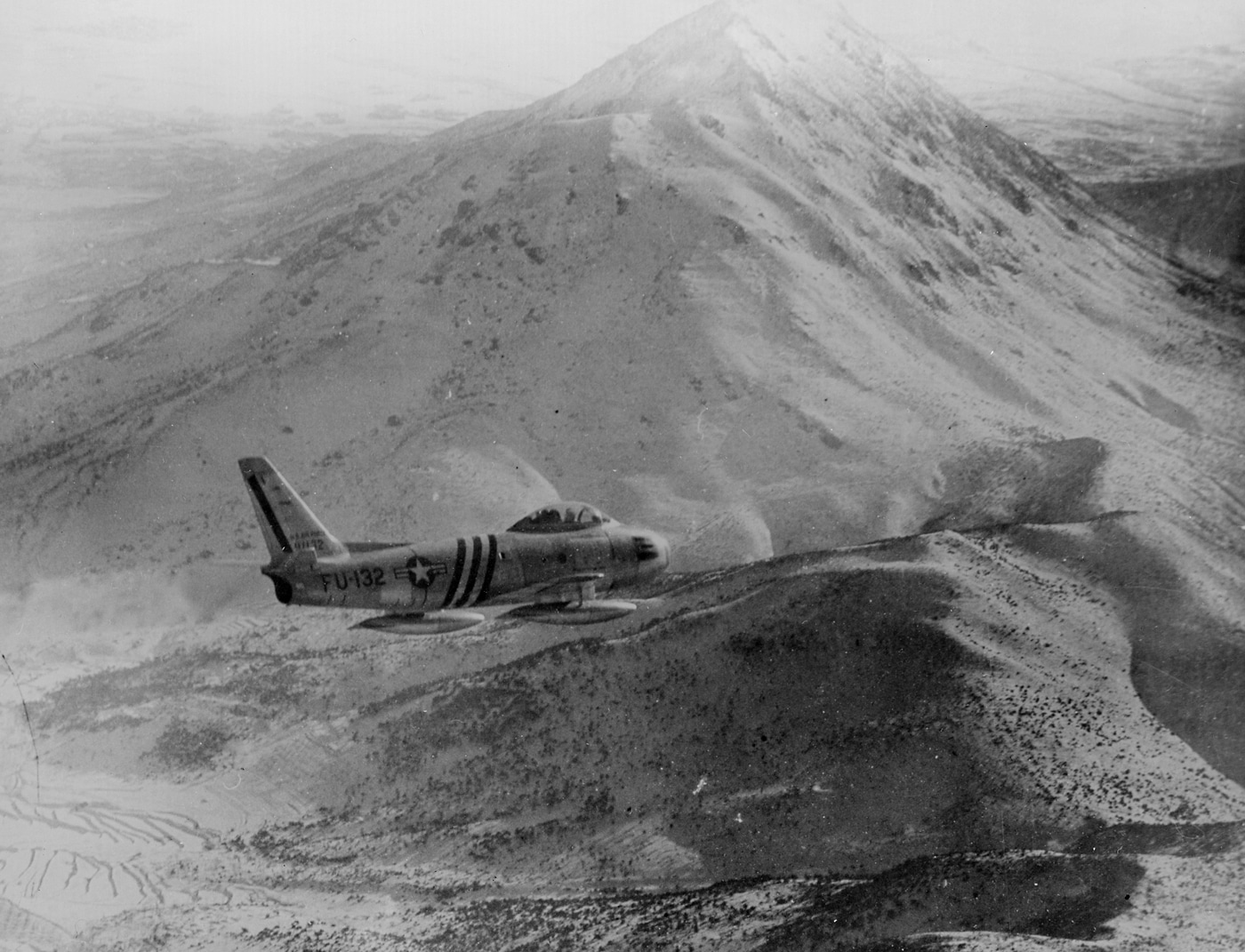
Framed against a rugged, snow-covered mountain peak in North Korea, a 5th Air Force F-86 Sabre heads back to the barn in January 1951. Image: NARA
He wouldnt be the last.
It should be noted that U.S. propaganda does probably over-credit the jet just a bit.
That number has been cited in countless books and articles about the air war in Korea.
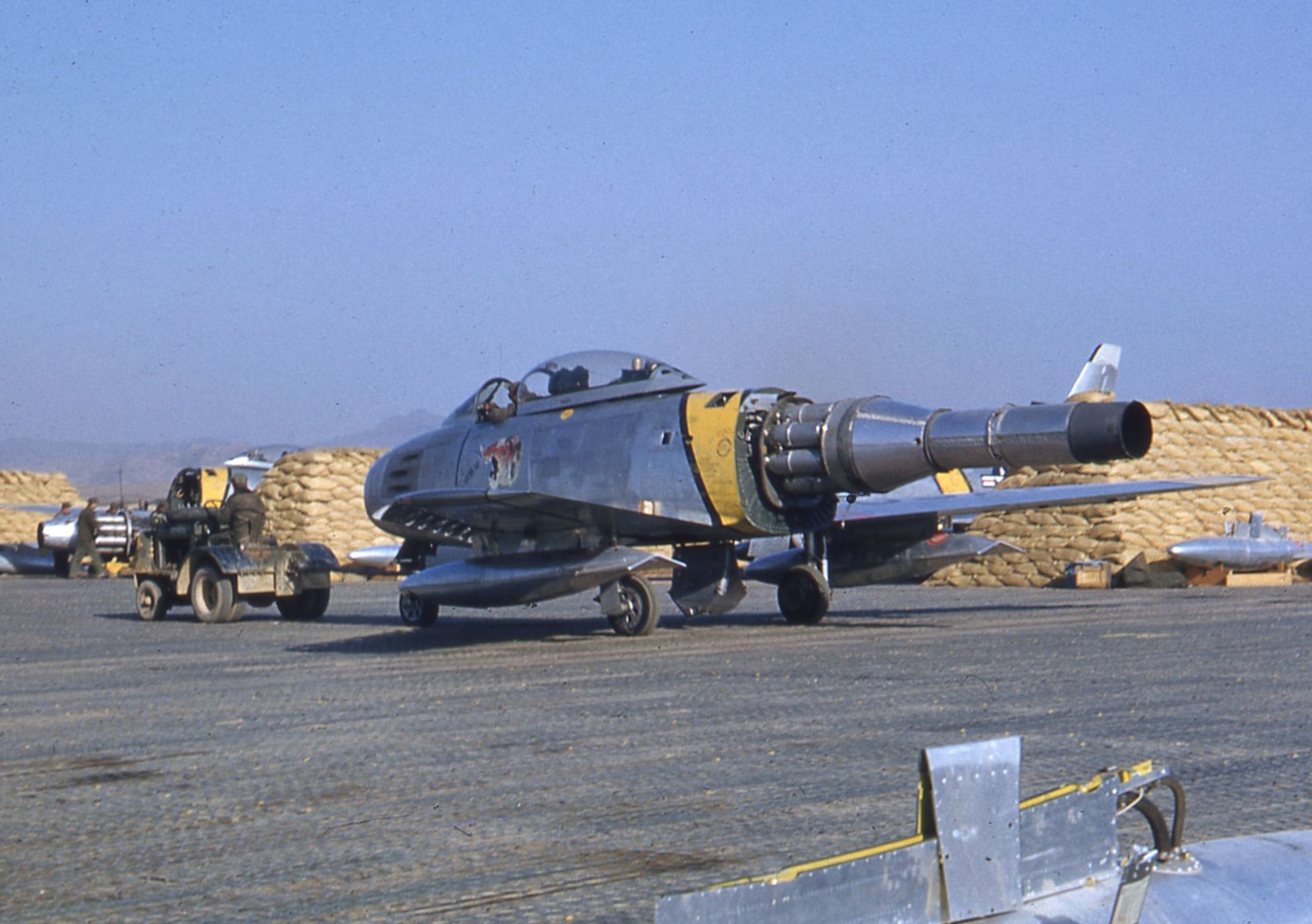
The tail fuselage of this F-86 has been removed revealing the engine that runs the entire length of the plane. Image: NARA
A total of 477 F-86H Sabers were produced.
The former built 112 aircraft while the latter produced another 1,815.
There were also models built under license with American-made components by Fiat in Italy and by Mitsubishi in Japan.

In July, 1953, two U.S. Air Force F-86 Sabre jets of the 4th Fighter Interceptor Wing take off for MiG-Alley in search of Russian-built MIG-15s. Image: NARA
The aircraft was one that was flown by those who had the right stuff!
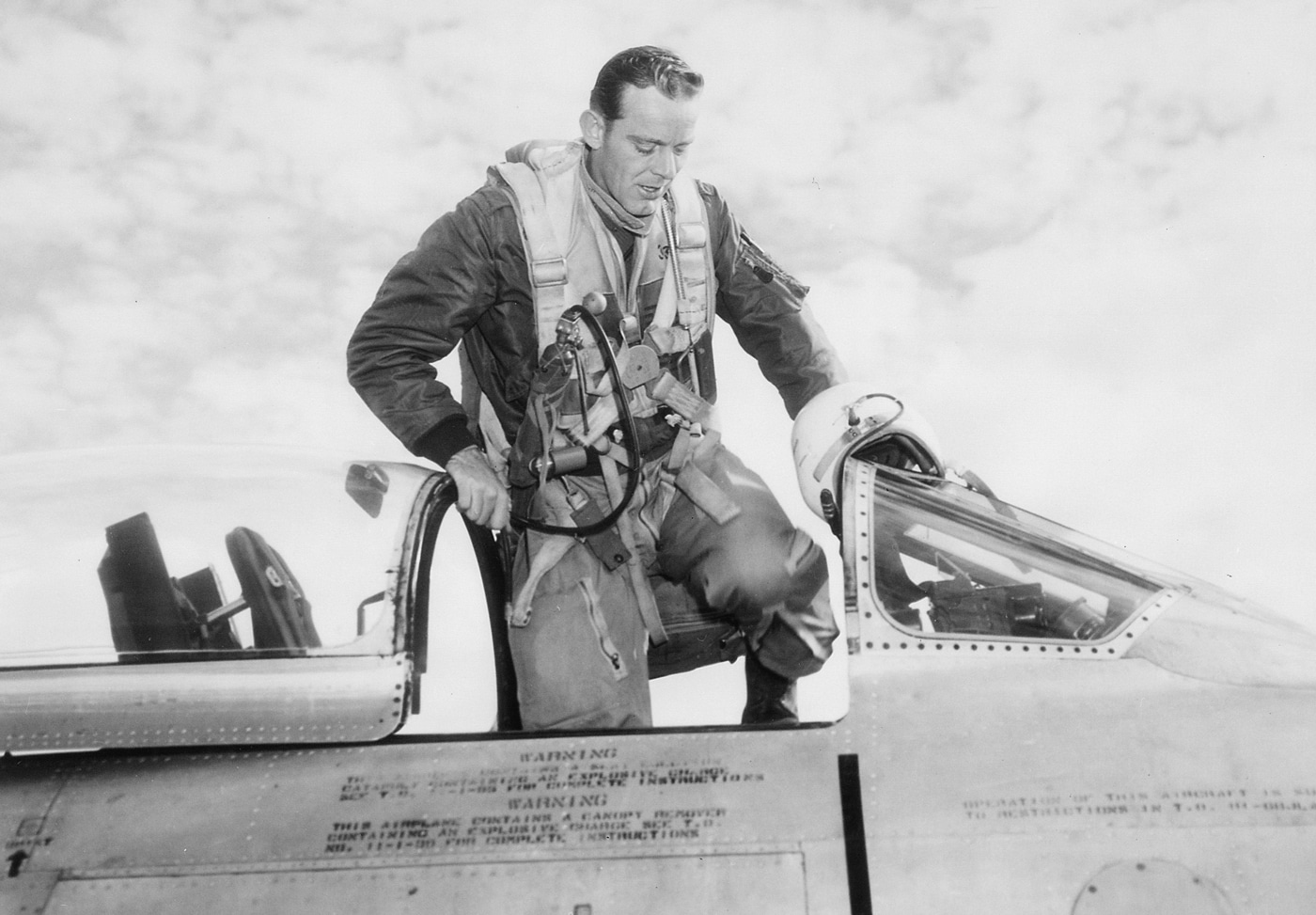
U.S. Air Force F-86 Sabre jet pilot Capt. Kenneth D. Critchfield mounts to the cockpit of his fighter to make another sweep of “MiG Alley” in October 1951. Image: NARA

In this right-side view of a North American F-86 Sabre, you can see the panel to the ammunition bay has been removed for loading and maintenance of the machine guns. Image: NARA
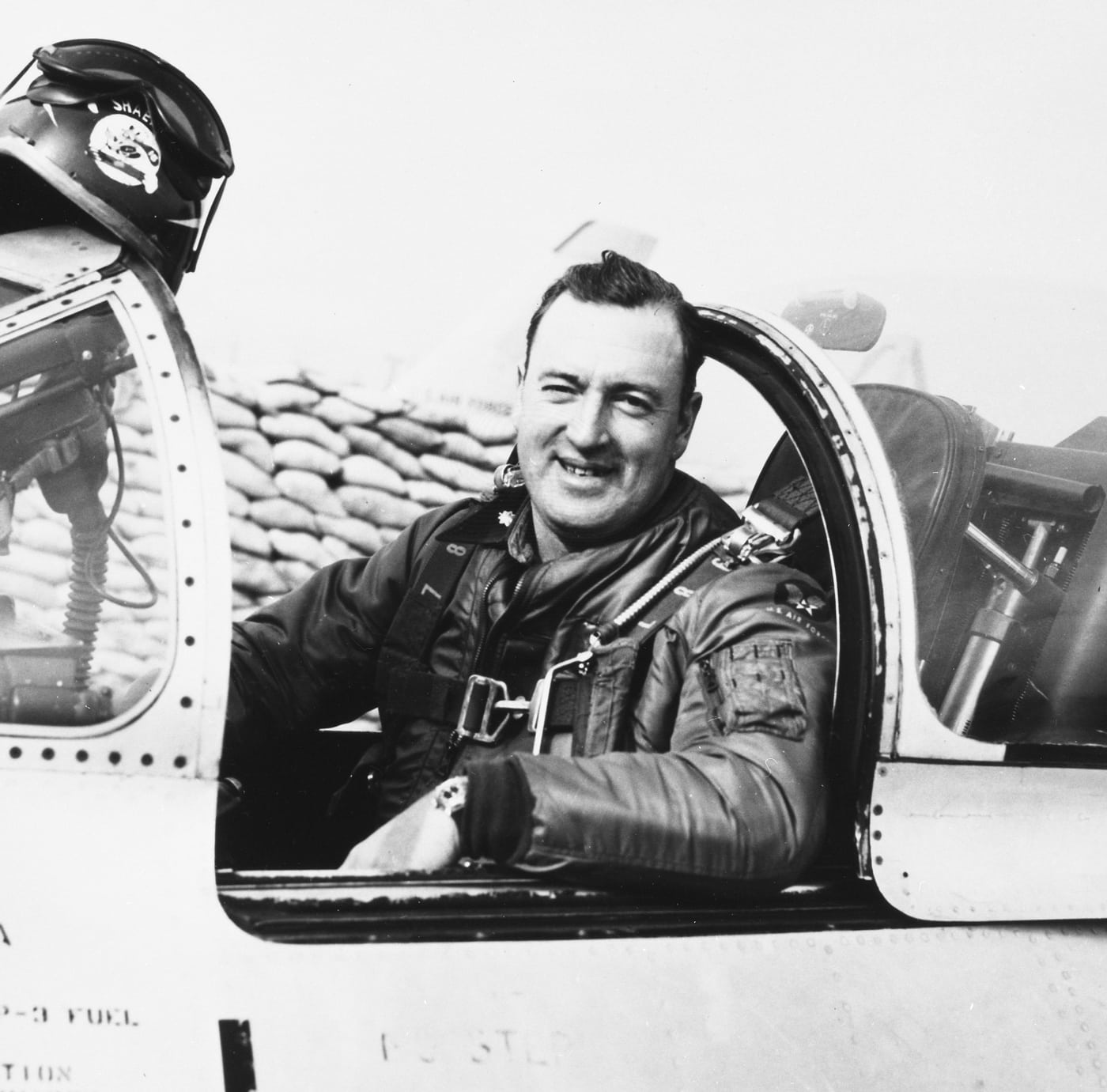
Maj. William Shaeffer was credited with an unusual MiG kill in the Korean War. When attacked, he made high-speed maneuvers in his F-86, causing a MiG-15 pilot to lose control and crash. Image: NARA
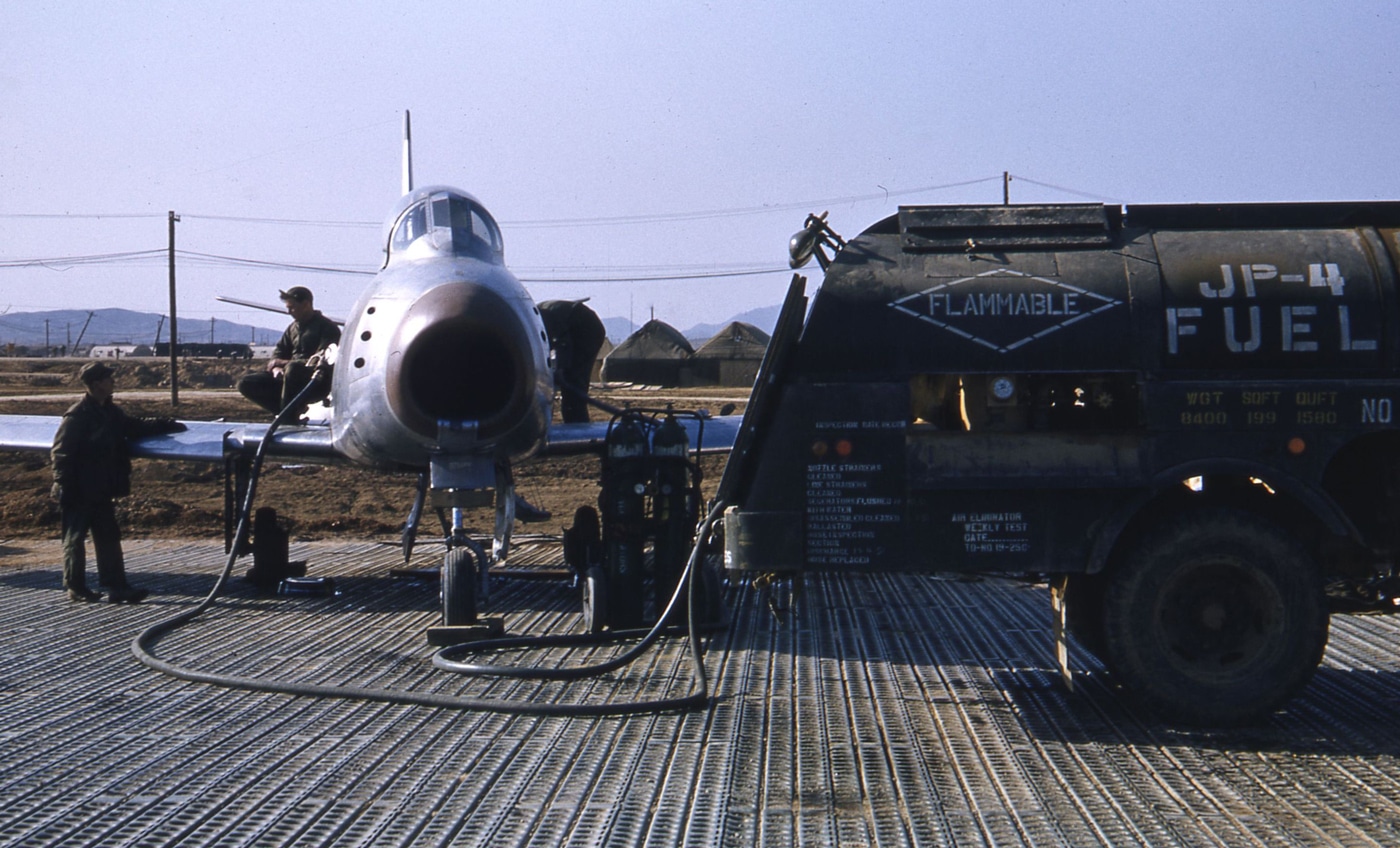
Front view of a North American F-86 Sabre jet being fueled prior to a combat mission in the Korean War. Image: NARA
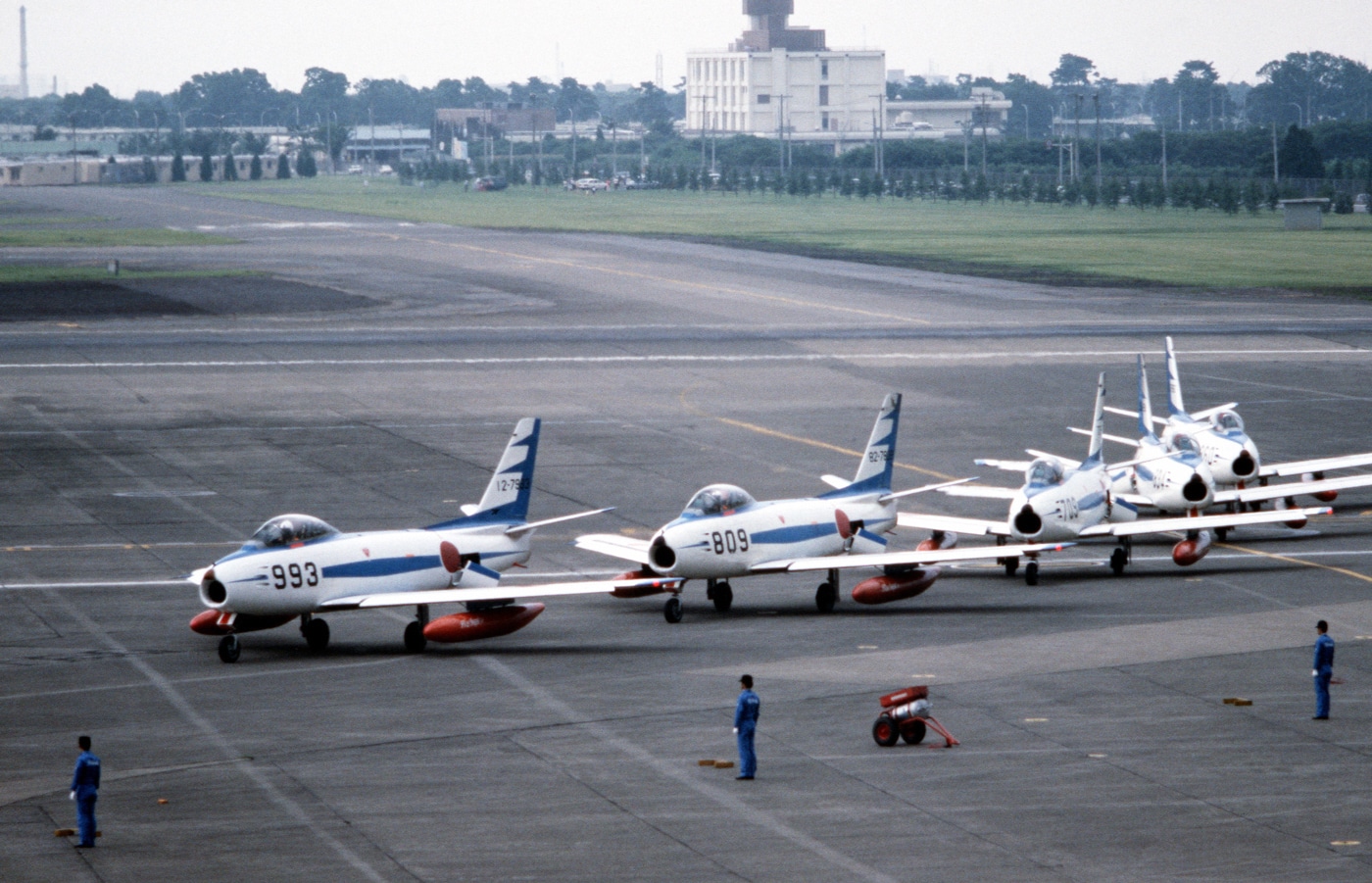
The Japan Air Self Defense Force’s flight demonstration team, Blue Impulse, taxis their F-86 Sabre aircraft during the annual Japanese-American Friendship Festival in 1981. Image: NARA
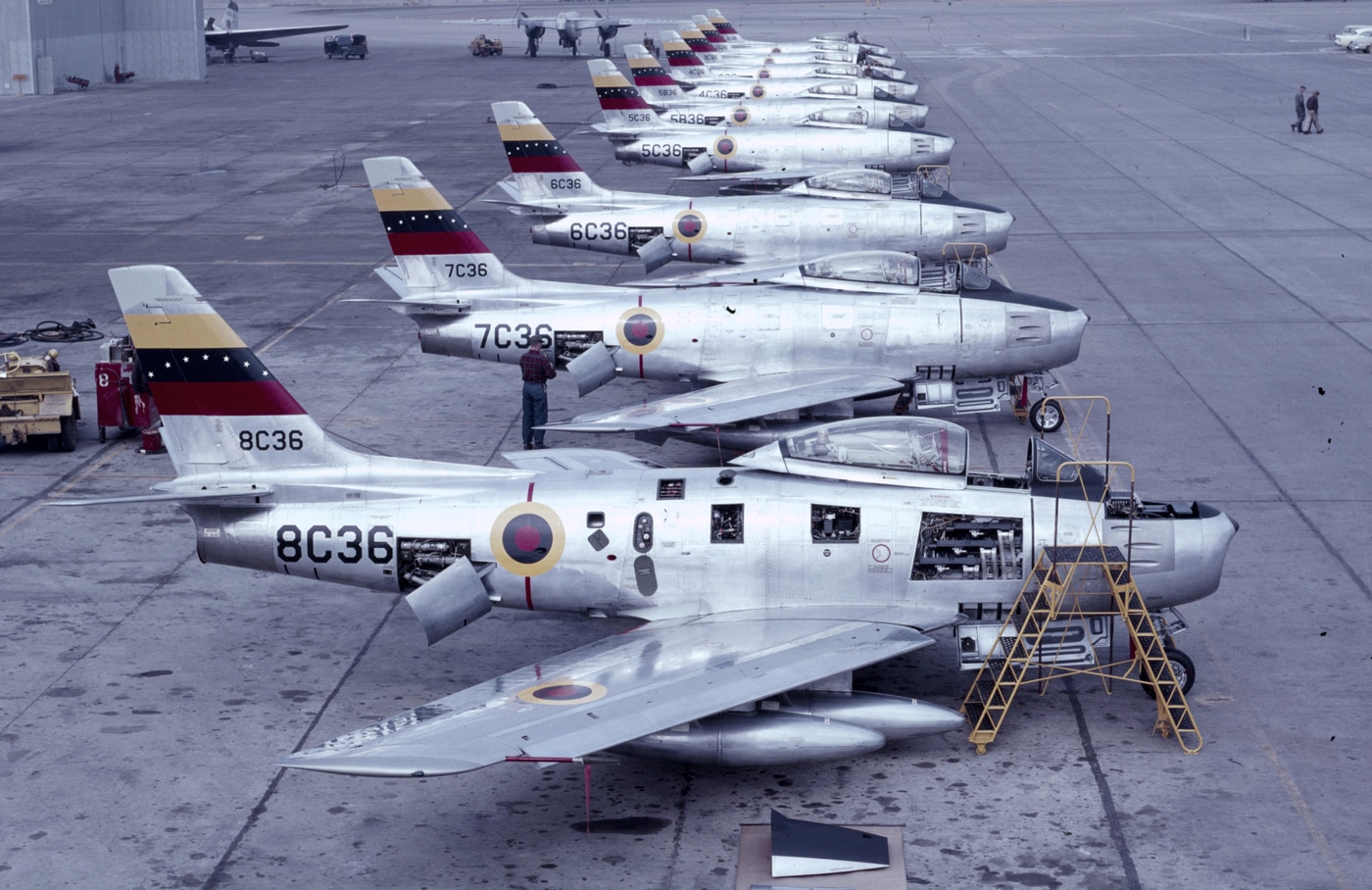
North American F-86 Sabres are ready for inspection before being delivered to the Venezuelan Air Force in 1957. Image: NARA
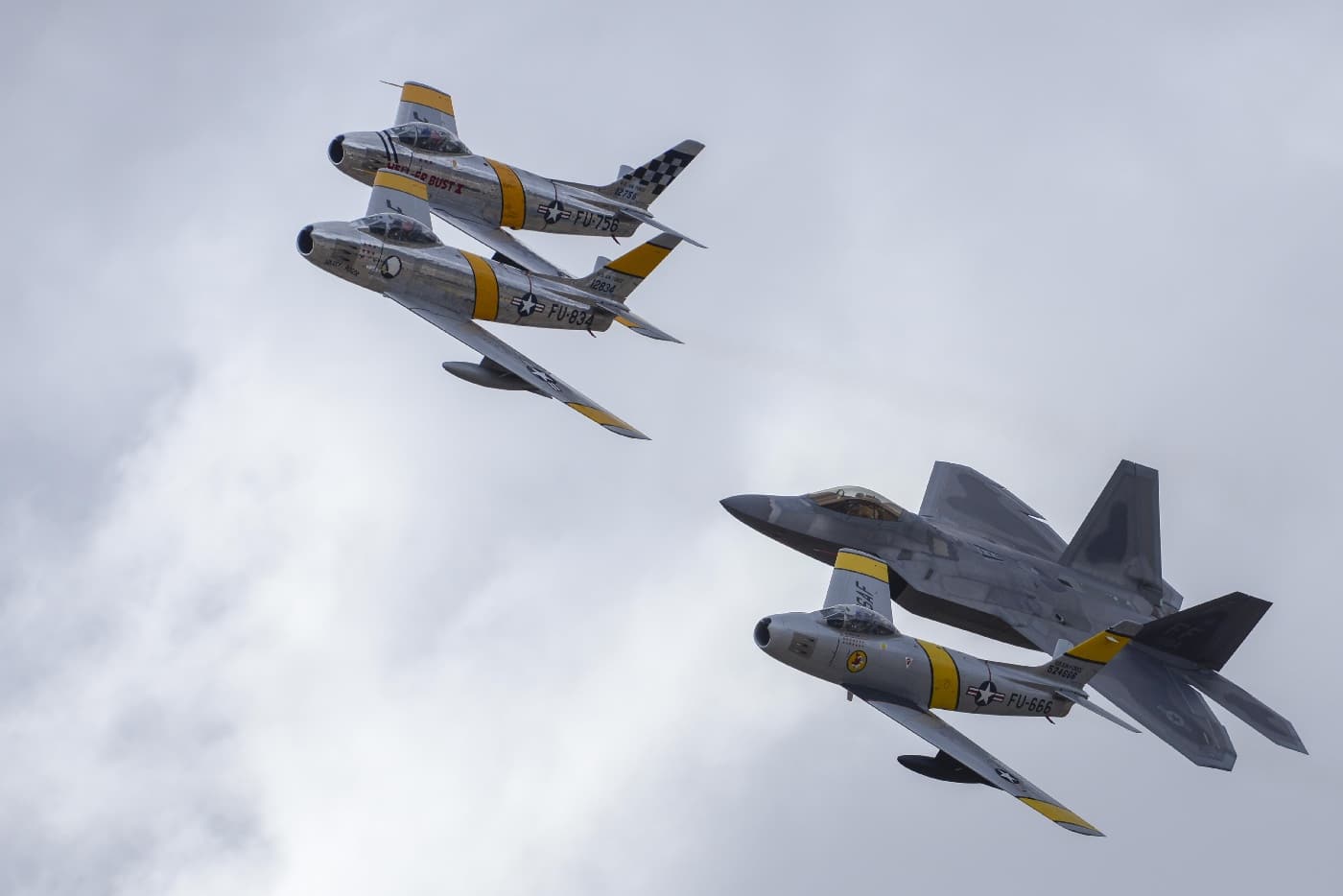
Three F-86 Sabres and an F-22 Raptor fly in formation during the 2016 Heritage Flight Training and Certification Course at Davis-Monthan Air Force Base, Ariz. Image: U.S. Air Force




